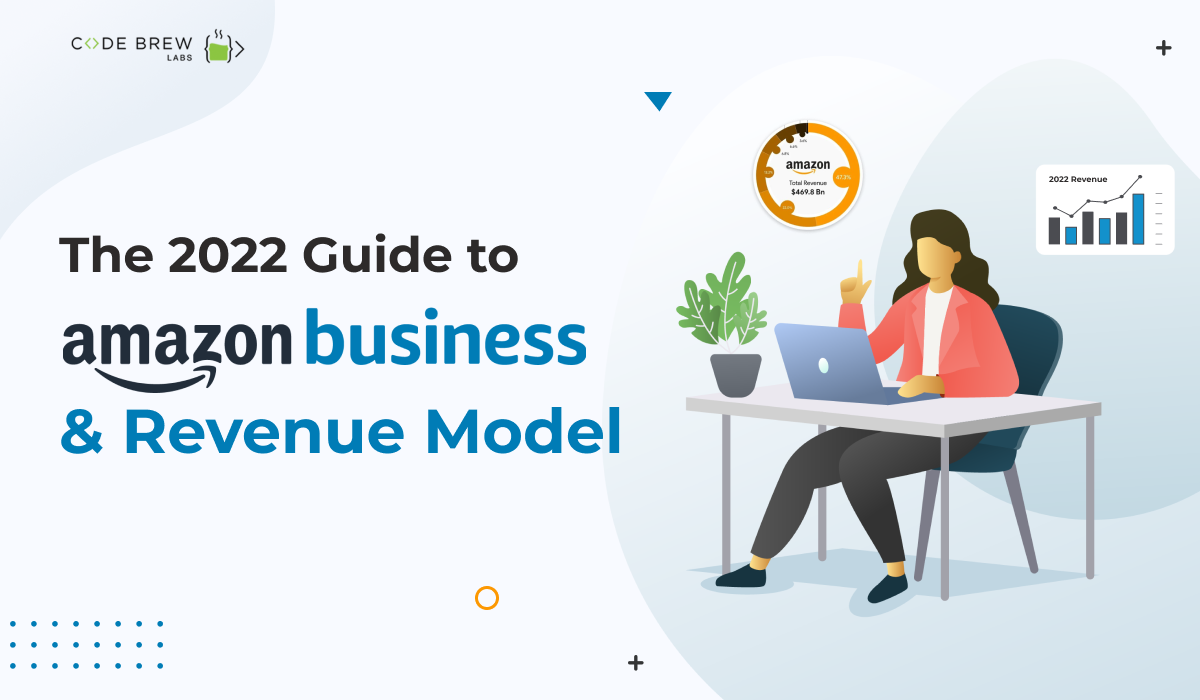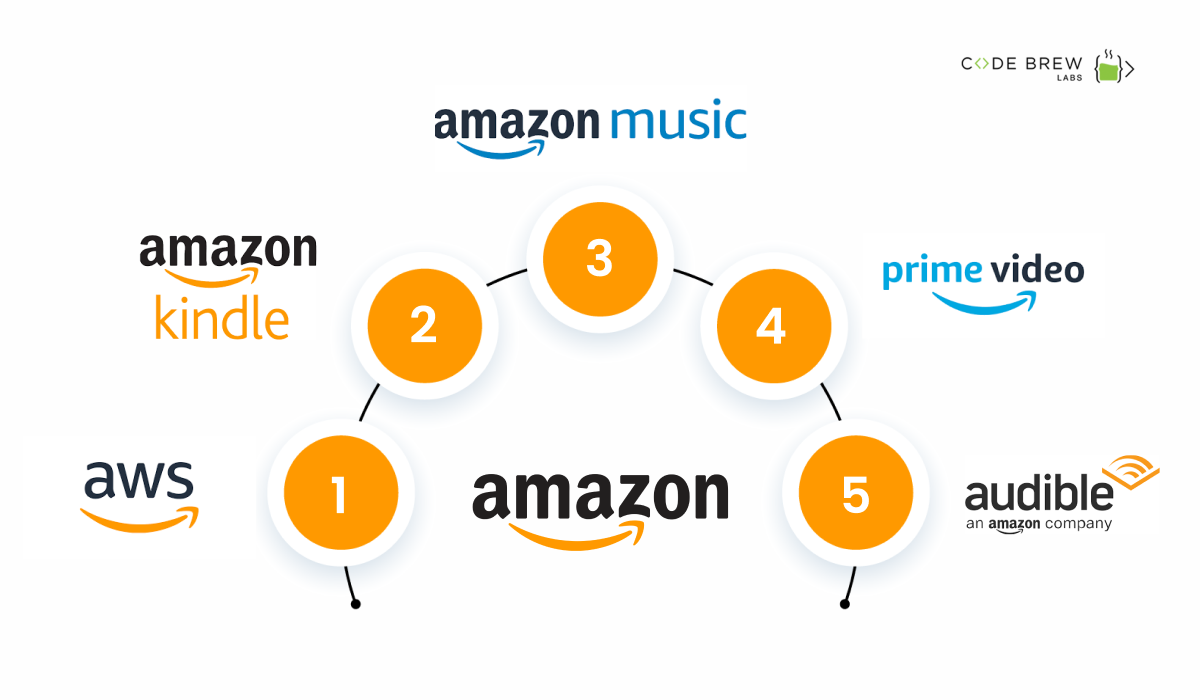
Amazon business model cannot be better explained than the way its CEO Jeff Bezos once explained, “There are two kinds of companies, those that work to try to charge more and those that work to charge less. We will be the second.”
Table of Content
If you have a great business idea for a multivendor eCommerce like Amazon, this is probably the most crucial insight you can get from the man who started Amazon.
Read on to know what else Amazon does, other than offering the lowest prices on most of its products, to keep the business running and thriving for almost three decades now.
Started as an online book shop named Cadabra, Jeff Bezos broke into the realm of online business in 1994. Later, he renamed its organization Amazon and in 1997 it was listed on an open market on the NASDAQ.
Interestingly, when it started only less than 1% of the world’s population had access to the internet. Today it’s one of the largest retail marketplaces in the world that offers almost everything you can think of. With a market capitalization of $1.3 trillion, Amazon has come a long way since its inception in 1994.
Amazon primarily runs an eCommerce platform as its core business model. In addition, its other business operations are directly tied to the eCommerce platform. For instance, while Amazon AWS services improve Amazon’s tech infrastructure, Amazon Prime rewards repeat customers which significantly enhances its overall business.
In short, Amazon simply targets an audience segment that buys its products and services. It also offers various other services such as Amazon Prime, AWS services, Audible, Kindle, prime video, Amazon music, and more.
Amazon Business Marketplace revolves around four key attributes – consumers, sellers, developers, and content creators.
As per a survey in 2021, out of 200 million prime subscribers, 147 million subscribers are based in the US. Amazon serves its huge customer base through its online website & app that primarily focus on product selection, convenience, and price. Also, the website is designed in such a way that it caters to the needs of customers and allows them to browse through various categories with ease.
And not just the customers, Amazon offers retailers to sell products, grow business on the websites, and fulfill orders on the go! In return, Amazon earns a fixed percentage on each sale, per unit activity fees & interest, etc.
Amazon Web Services, one of its key subsidiaries, serves different types of developers and enterprises. It provides distributed computing processing capacity and software tools via AWS server farm to various business segments. It includes startups, academic institutions, government agencies, and more.
Amazon offers to serve different types of content creators like musicians, authors, app developers, and filmmakers to sell their content on the platform. Again, in return, it charges some percentage of its business earnings. For instance, an author can publish his book on Kindle with a 70% stake in the total earnings from the content. The rest goes to Amazon as service-providing charges.
As mentioned earlier, despite Jeff Bezos’s growing interest in diversification of its services in different business aspects, Amazon revenue model and its successful run largely depend on its online store. The multivendor eCommerce giant has generated $163 billion from 2019 to 2020 only from its product sales.

Similarly, Prime Day has been a significant occasion for online sales on the platform. To give you an idea, Prime day broke all records with $11 billion in sales in 2021.
Apart from the products sold on its online platform, Amazon leverages a wide range of consumable and durable goods. This includes social media products in both physical and digital formats. From books, videos, and games to music and software, digital product subscriptions provide unlimited viewing or usage rights.
Amazon has its physical stores where users can walk in and easily buy products. Amazon, Books, Amazon Go, Amazon Fresh, and Amazon 4-star are some of its physical stores.
It offers two options to all its merchants – FBA and non-FBA products. Where in FBA, Amazon stores, packs, and delivers the product to a customer, the merchant does the same in non-FBA products. And Amazon charges fees in both cases.
The company benefits a lot from third-party sellers in the form of shipping fees and other commissions. For example, Amazon charges a listing fee, starting from 2% on various product categories, from third-party sellers.
A significant portion of Amazon business revenue comes from its monthly and annual subscriptions. Its subscription services are available on audiobooks, digital music, e-Books, and other non-AWS services.
As mentioned earlier, Amazon Web Services includes global sales of computing, storage, database, etc.
The organization also makes profits from sales of advertising services.
As briefly mentioned earlier, one of the key reasons why people worldwide use Amazon services is its low and competitive pricing over a wide variety of products. The multivendor eCommerce giant only offers such pricing convenience to compete with other market players. Here are some of the pricing tactics used by Amazon.
Amazon frequently changes the prices of the products on its platform. This dynamic pricing allows the company to keep its prices competitive, something that has helped Amazon boost profits by 25% on average. These changes are based on several factors including customer activity, available product inventory, order history, trending product preferences, etc.
Amazon’s pricing algorithm is such that every customer assumes that the platform offers the lowest price among its competitors. However, what happens is that it offers huge discounts on a wide range of common products and raises the price of uncommon products. Now, because most of the visitors visiting the website or app buy the common products, they automatically think that the prices are lower overall.
All the retailers on Amazon offer an option of monitoring the prices offered by its competitors. This allows them to adjust their prices to attract as many customers as possible.
Amazon business model is comprised of various income streams. And if you are only interested in Amazon alike eCommerce stores, you will need an app that efficiently serves your target audience. However, multiple factors account for a successful run of an eCommerce marketplace despite the presence of other established players.
Now, you don’t need to be an app developer to start an eCommerce business. You can simply outsource app development to experts – like Code Brew!
Our expert app development team has built over 10,000 apps for various industries like social media, on-demand ride-sharing, online food delivery, e-commerce app, online education, healthcare, and so on!
Looking to build an advanced-feature-loaded eCommerce App like Amazon? Contact Code Brew today and get a free demo!
